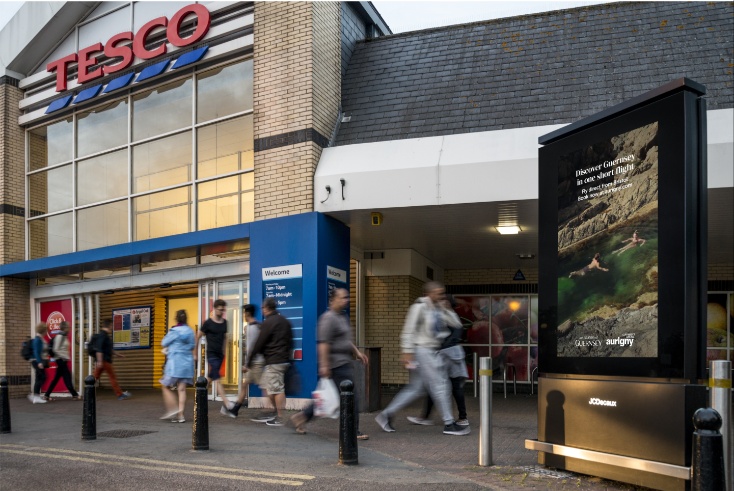A shortage of first-party data will create retail media network alliances

Opinion
Retail media networks will need to collaborate in the future to avoid a Wild West scenario.
We’ve been talking about the importance of first-party data in digital marketing for a decade.
With third-party cookies expected to disappear at some point in the second half of the year, the focus on utilising data owned by brands and media owners has become acute.
But is there enough data?
The tech giants, big media publishers and a smattering of other players have enough data and the capability to make combining data from multiple sources, modelling and cookie alternatives work well enough.
But let’s face it: retail media has a data problem. Despite its stellar growth, or perhaps because of it, brand investors and individual retail media networks are finding that there is not always enough data available to make first-party data-driven campaigns effective.
Realistically, the number of UK retailers that have enough customer data of their own to drive consistent performance for all brand investors in their retail media is very small.
Why is this so?
To understand the problem, how it can be resolved and how the situation will evolve, it’s worth taking a helicopter view of trends in the UK market that are shaping retail media as it grows.
First, growth in investment is being driven by agencies’ understanding that the retail media space is not just about sales performance – it’s about brand-building and customer experience.
The unification of digital estates with in-store and around store, point-of-sale, post-sales and loyalty are creating a powerful circle that can influence people from the top to the bottom of the funnel. Retail media can be a brand-builder when used in the right way.
This is even more significant given we’ve all become so used to immediate retail gratification and brand messaging from so many sources. For many categories, particularly FMCG and fashion, there is but a small psychological gap now between being receptive to brand messaging and being ready to buy.
Naturally, retailers have wanted to build data capabilities and retail media estates to take advantage of the opportunity and have so far tended to create, in effect, mini-walled gardens each with their own front door.
There are several issues emerging from this fragmented scenario. The first is the data shortage. Most UK retailers simply do not have addressable audience pools from their loyalty programmes that are large enough to provide data that can deliver against the needs of every brand or campaign. A dataset with a couple of million consumers might not be large enough to sustain a valuable income stream; to be viable in the long term, much more is needed.
Secondly, it isn’t feasible for an agency representing, say, a major soft-drinks brand to engineer separate investments in every possible retailer – that’s one of the reasons agencies historically didn’t invest in retail activation.
Big brands that already invest heavily in key platforms such as Google, Meta and Amazon will likely want similar arrangements in the retail space.
Thirdly, the main audience opportunity is in and around the store. Office for National Statistics figures show that, across all sectors, online accounts for just a quarter of all retail sales in the UK and less than 10% for grocery.
SMG’s research shows that UK consumer behaviour is blurred across digital and in-store. A minority (12%) only do digital shopping, 45% just shop in store, but 43% do both.
Unless retail media networks have the ability to deliver true omnichannel marketing and sufficient data to power that process, campaign performance struggles.
What does this mean for retail media and the advertising space?
Some retail media networks will be big enough to hold their own – but there will be a core subset of retailers occupying this space, with either the scale or the differentiation to win.
Consolidation in some form, driven by the demand side, is therefore probable. This does not necessarily mean the merger of retail media networks or even retailers as a means to scale audiences – although this could happen.
Specialist technologies and service providers aggregating retail media are available and evolving fast, and major demand-side platforms already integrate some aspects of retail media.
But could there be an appetite to create a data alliance among a range of retailers? Is there an opportunity to safely and compliantly bring together multiple sets of retailers’ first-party data for brands and agencies to access through one point? Is this even possible when many of these businesses are competitive and audience duplication could be a challenge?
This may seem a radical proposition, but in a market where so much investment and power is focused on such a small number of media tech platforms, collaboration between retail media networks (particularly smaller ones) may become inevitable. And, if it happens in retail, might that stimulate wider collaboration in media?
Formalised arrangements or independent platforms that add value and enhance retailers’ propositions consistently must be more attractive than a Wild West scenario in which packets of data are exchanged on an open market for specific, one-time use in an unaccountable way.
Before data consolidation and more streamlined access arrives, brands must think clearly about the best way to maximise the potential of retail media, of which there are some key use cases.
Retail media’s first-party data shortage is a structural problem, not just an issue in the context of the removal of third-party cookies from Chrome. It’s a long-term challenge that retailers will want to solve and brand advertisers should be mindful of.
Katie Streeter Hurle is head of strategy at SMG



